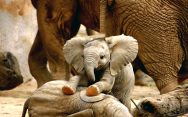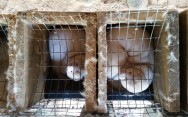An Orangutan Named Rakus Uses Medicine to Heal Wound
It’s not just humans who use medicines or are drawn to wild plants to cure ailments. Animals are
known to self-medicate when they are ill, wounded or for stress and sadness. This
phenomenon, known as Zoopharmacognosy, has been observed in many species of animals. It
reveals how animals interact with their environment in a way people have written off as
exclusive to human science and medicine.
One common example is when dogs and cats eat grass to induce vomiting. There are many
other examples of animals using medicine in sophisticated ways. For example, apes have been
observed isolating the medicinal parts of plants by tearing off leaves and stems and taking them
internally or applying the pant to their wounds. Research in lambs has shown that animals can
learn to use medicine by observing the effects of certain plant foods. Animals eat plants to expel
parasites, get nutrients missing from their diets, and induce labor, among other things.
An Indonesian male orangutan named Rakus was observed applying plant sap and crushed
leaves to a wound on the “flange” surrounding his face, as a poultice. The plant, known locally
as akar kuning (Fibraurea tinctoria), is an Asian plant known for its antibacterial, antifungal, anti-
inflammatory and pain relief properties. Rakus was applying plant medication externally for
healing in the same manner that humans used this traditional medicine.
Andrea DiGiorgio, a biological anthropologist at Princeton University, noted that animals don’t
need to understand everything about the medicinal properties of a plant to be able to utilize the
resources in their environment in an intelligent way. DiGiorgio said: “I think this really speaks to
the intelligence that all animals have to utilize what works for them.”
Humans assume that the taxonomy of human knowledge accumulated through language and
writing gives us superior intelligence and understanding of our environment, but this speaks to
the advantages of human technological development rather than intelligence itself. This is
called Speciesism; and carries with the idea that humans are at the top of the hierarchy and
have the greater moral value.
Animal intelligence is rich and in tune with its environment. Often humans are looking in the
wrong places when they search for animal intelligence and knowledge, basing it on concepts of
intelligence that have been imposed by human and Western perspectives. If we observe
animals in their environment, we can see what we have missed. Animals often lead humans to
medicinal plants, water and shelter. Their remarkable senses and intelligence are not
meaningless tools that assist human technology, they should be respected in their own right.








Social Media